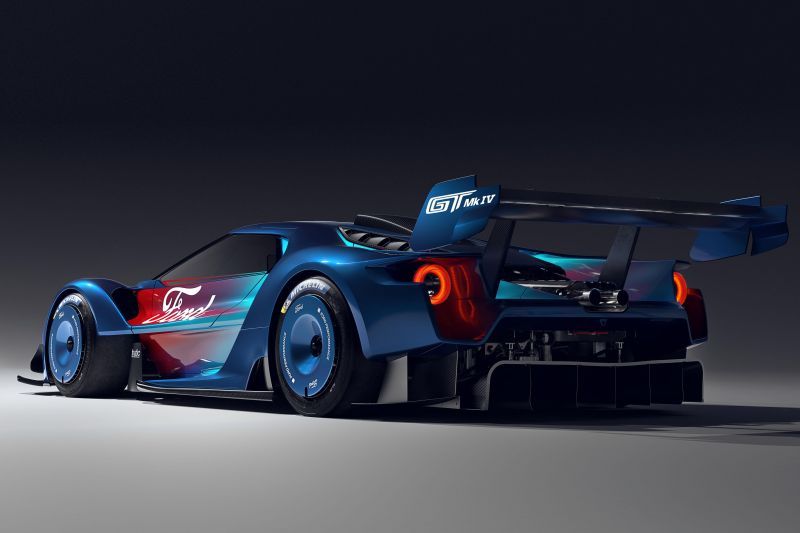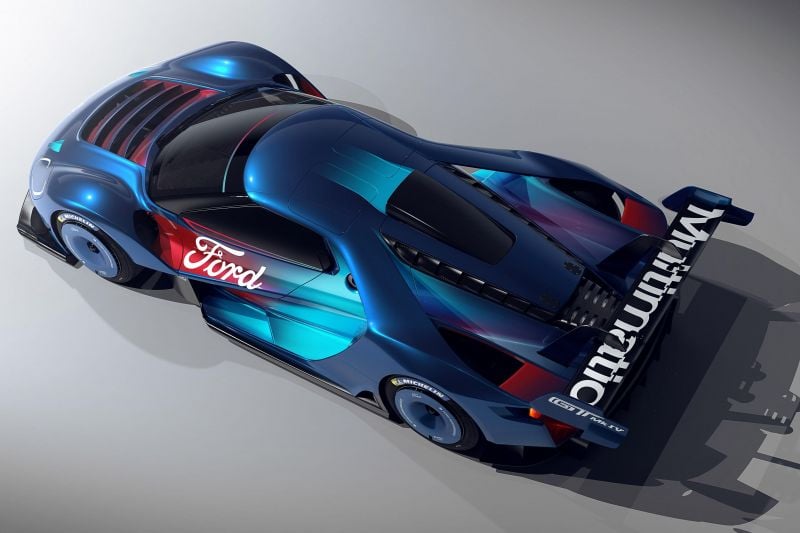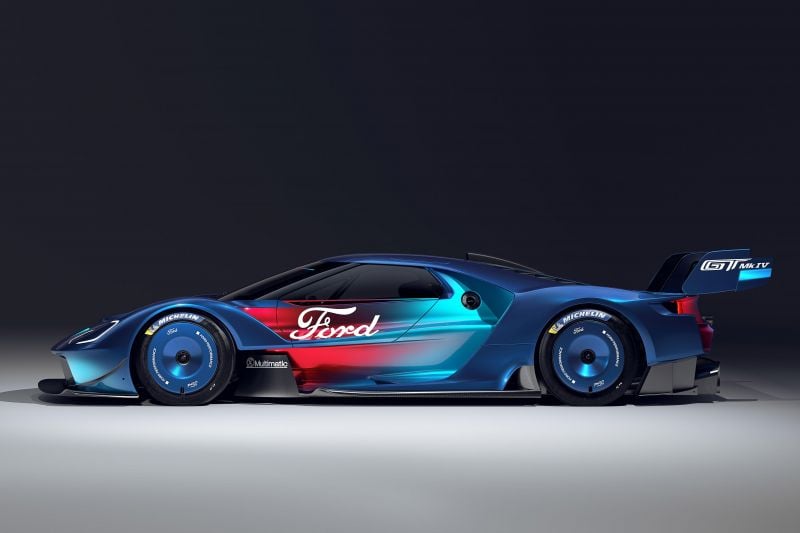Production of the Ford GT will end soon, but not before a series of 67 track-only specials are made.
While recognisably a version of the second-generation GT, the new Ford GT Mk IV has a unique “long tail” carbon-fibre body draped over an extended wheelbase.
Other notable changes we can see are a significantly lower and seemingly wider stance and a full aerodynamics package including a massive rear wing and diffuser.
Powering the GT Mk IV is a heavily modified version of the GT’s 3.5-litre twin-turbo V6, which will sport a larger displacement and a whole host of other modifications.
Work on the engine has yet to be completed, but Ford says it should produce around 597kW, or 800hp in the old money.
To put that in perspective, the regular road-going version of the GT has 492kW to its name, while the previous track model, the GT Mk II, made a mere 522kW.
The revised engine will drive the rear wheels via a “proper racing gearbox”.
Aside from these morsels of information, Ford is being coy about the Mk IV’s details, with presumably more specs to follow when the first cars are delivered to customers around mid-2023.
Anyone interested in the car will need to fill out an online application form. Successful applicants will be notified in the first quarter of 2023, with deliveries expected to begin around the middle of the year.
Like all other second-generation Ford GTs, the Mk IV will be hand built by Multimatic at its factory in the suburbs of Toronto, Canada.
Named Mk IV in honour of the original GT40 Mk IV that triumphed at the 24 Hours of Le Mans in 1967, the Ford GT Mk IV is priced from US$1.7 million ($2.5 million) before taxes and on-road costs.
The 1967 GT40 Mk IV may have looked similar to the models before it, but had a completely new chassis featuring adhesive bonding, and a honeycomb aluminium construction.
It also featured a redesigned body that was not only more aerodynamic, but also 230mm longer than earlier cars.
Power came from a 7.0-litre V8 engine hooked up to the rear wheels via a special transaxle with its own cooling system.
Earlier this year Ford unveiled the GT LM Edition, a final run of 20 road-legal supercars that will be built by the end of 2022.











